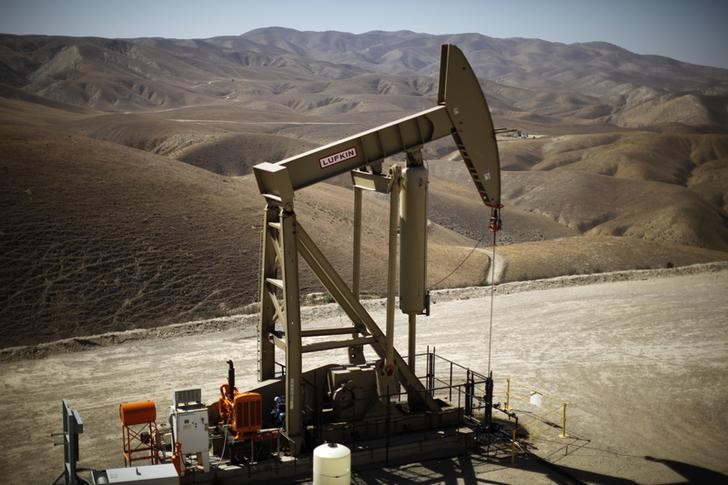By Scott DiSavino
Sept 21 (Reuters) - U.S. energy companies cut oil rigs for a second week in three as new drilling has stalled in the nation's largest oil field, where production was forecast to grow at the slowest pace in nearly two years due to pipeline constraints.
Drillers cut one oil rig in the week to Sept. 21, bringing the total count down to 866, General Electric (NYSE:GE) Co's GE.N Baker Hughes energy services firm said in its closely followed report on Friday. RIG-OL-USA-BHI
The U.S. rig count, an early indicator of future output, is still much higher than a year ago when 744 rigs were active as energy companies have been ramping up production in anticipation of higher prices in 2018 than previous years.
But since June, the rig count has held mostly steady at above 860 rigs as crude prices in the Permian region in western Texas and eastern New Mexico have collapsed due to a lack of pipeline infrastructure needed to transport more fuel out of the region. The Permian is the biggest shale oil formation in the United States. production in the Permian will rise 31,000 barrels per day, its slowest growth since late 2016, the Energy Information Administration said this week. than half the total oil rigs are in the Permian. Active units there increased by five this week to 488, the most since January 2015.
With so many rigs operating in the basin, operators are drilling wells but are not completing them due in part to the transport constraints.
Drilled-but-uncompleted wells (DUCs) - wells not connected to a pipeline - in the Permian will rise by 211 to 3,630, the largest monthly increase since the EIA began tracking the data in September 2016.
This week, U.S. crude futures CLc1 were up 1 percent to about $71 per barrel, putting the contract on track to rise for a second week in a row in volatile trade ahead of an OPEC meeting on Sunday. O/R
So far this year, U.S. oil futures have averaged $66.64 per barrel. That compares with averages of $50.85 in calendar 2017 and $43.47 in 2016.
Looking ahead, crude futures were trading at nearly $71 for the balance of 2018 CLBALst and above $68 for calendar 2019 CLYstc1 .
In anticipation of higher prices in 2018 than 2017, U.S. financial services firm Cowen & Co this week said the exploration and production (E&P) companies it tracks have provided guidance indicating an 18 percent increase this year in planned capital spending.
Cowen said the E&Ps it tracks expect to spend a total of $85.3 billion in 2018. That compares with projected spending of $72.2 billion in 2017.
Analysts at Simmons & Co, energy specialists at U.S. investment bank Piper Jaffray, this week forecast the average combined oil and natural gas rig count would rise from 876 in 2017 to 1,031 in 2018, 1,092 in 2019 and 1,227 in 2020.
Since 1,053 oil and gas rigs were already in service, drillers would only have to add a handful of rigs during the rest of the year to hit Simmons' forecast for 2018.
So far this year, the total number of oil and gas rigs active in the United States has averaged 1,018. That keeps the total count for 2018 on track to be the highest since 2014, which averaged 1,862 rigs. Most rigs produce both oil and gas.
<^^^^^^^^^^^^^^^^^^^^^^^^^^^^^^^^^^^^^^^^^^^^^^^^^^^^^^^^^^^ Graphic on U.S. rig counts
http://graphics.thomsonreuters.com/15/rigcount/index.html U.S./Canada natural gas rig count versus Henry Hub futures price
http://tmsnrt.rs/2eT9k44 Shale oil breakevens
http://tmsnrt.rs/2fO4b17
^^^^^^^^^^^^^^^^^^^^^^^^^^^^^^^^^^^^^^^^^^^^^^^^^^^^^^^^^^^>
